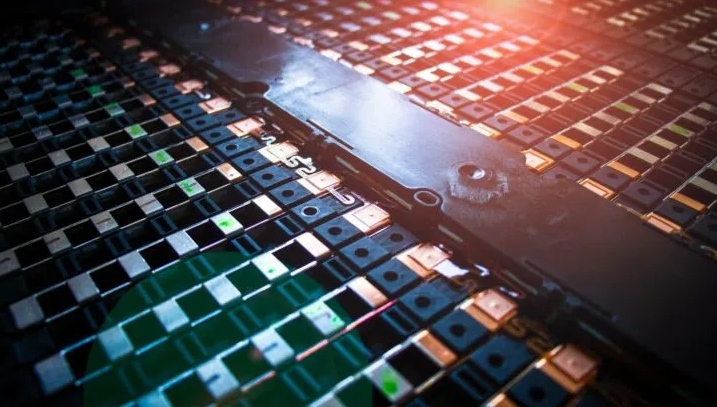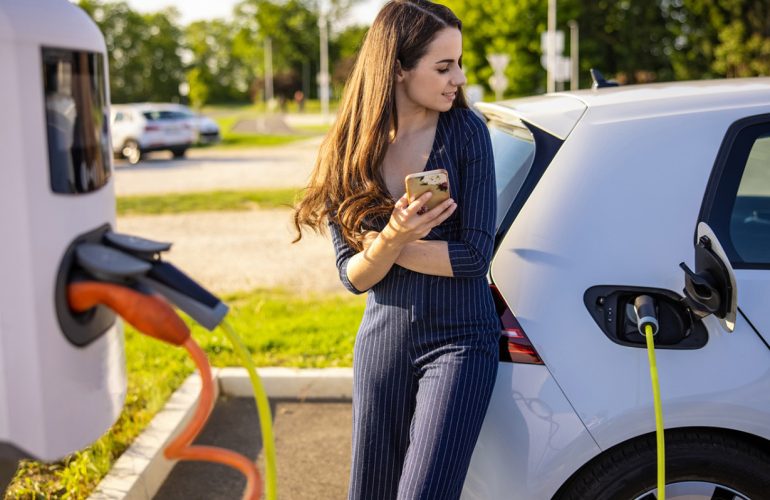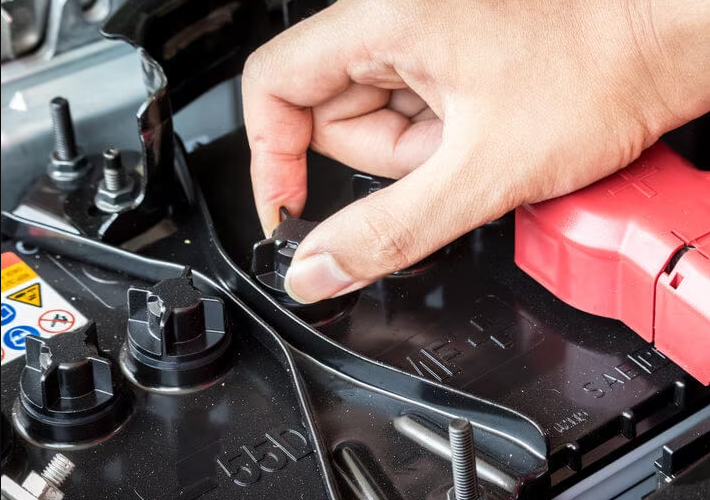Before lithium ion battery hit the scene, nickel cadmium was the standard—lithium has about twice the energy density of nickel cadmium, making this a much more powerful battery choice.
The adoption of lithium-ion battery has risen significantly in the present times. This is because Li-ion battery endure for a long time, hold a high power frequency and are affordable to manufacture. Lithium-ion battery advantages include its rechargeable and highly portable nature.In order to gain the best from the Lithium-ion battery technology, it is necessary to know not only the advantages, but also the limitations or disadvantages. In this way they can be used in a manner that plays to their strengths in the best way.

What are the advantages and disadvantages of Lithium-ion battery?
Lithium-ion battery advantages:
- High energy density – Lithium-ion battery can have a high power capacity without being too bulky. It is one of the main reasons why they are so popular in portable devices industry.
- Small and light – Lithium-ion battery is lighter and smaller than other rechargeable battery in consideration of battery capacity. This makes it more practical in portable consumer electronic devices in which physical specifications such as weight and form factor are considered important selling points.
- Low self-discharge – Lithium-ion battery has extremely low self-discharge rate of about 1.5-3.0 percent per month. That means that the battery has a longer shelf life when not in used because it discharges slowly than other rechargeable battery. Take note that nickel-metal hydride battery has a self-discharge of 20 percent per month.
- Non memory effect – Lithium-ion battery has zero to minimal memory effect. Take note than memory effect is a phenomenon observed in rechargeable battery in which they lose their maximum energy capacity when repeated recharged after being only partially discharged. This memory effect is common in nickel-metal hydride rechargeable battery.
- Quick charging – Lithium-ion battery is quicker to charge than other rechargeable battery. It actually takes a fraction of a time to charge when compared to counterparts.
- High open-circuit voltage – Lithium-ion battery has a higher open-circuit voltage than other aqueous battery such as lead acid, nickel-metal hydride, and nickel-cadmium.
- Long service life – Lithium-ion battery can handle hundreds of charge-discharge cycles. Some Lithium-ion battery loss 20 percent of initial capacity after 500 cycles, while more advanced Lithium-ion battery still have capacity after 2000 cycles.
- Low maintenance – Lithium-ion battery do not require and maintenance to ensure their performance, as they has zero to low memory effect and low self-discharge.
- No requirement for priming – Some rechargeable cells need to be primed when they receive their first charge. There is no requirement for this with lithium ion cells and battery.
- Variety of types available – There are several types of Lithium-ion cells available with cylindrical or prismatic form. This advantage of Lithium-ion battery can mean that the right technology can be used for the particular application needed.
Lithium-ion battery disadvantages:
- Expensive – The production of Lithium-ion battery can be a rather expensive affair. The overall production cost of these battery is around 40% higher than nickel-metal hydride battery.
- Protection required – Lithium-ion cells and battery are not as robust as some other rechargeable technologies, they require protection from being over charged and discharged.
- Aging effect – Lithium-ion battery will naturally degrade as they suffer from ageing. Normally Lithium-ion battery will only be able to with stand 500 – 1000 charge and discharge cycles before their capacity falls to 50%.
- Transportation problems – This Lithium-ion battery disadvantage has come to the fore in recent years. A lot of restrictions are in place for the transportation of Lithium-ion battery especially large quantities by air.
- Deep discharge – Lithium-ion battery has low self-discharge. The general integrity of this battery remains intact even if partially discharged. However, deep discharge or when the voltage of a Lithium-ion cell drops below a certain level, it becomes unusable.
- Safety concerns – Lithium-ion battery may explode when overheated or overcharged. This is because gasses formed by electrolyte decomposition increases the internal pressure of the cell. Overheating or internal short circuit can also ignite the electrolyte and cause fire.
- Sensitivity to high temperature – Lithium-ion battery is susceptible to the downside of too much heat caused by overheating of the device or overcharging. Heat causes the cells or packs of this battery to degrade faster than they normally would.
Working Principle of Lithium Ion battery
Basic Structure: Lithium ion is a rechargeable battery which is made up of one or more cells (a cell is a power generating compartment of the battery) and each cell has following essential components namely- an anode, a cathode, a separator, electrolyte and two current collectors a positive and negative. Positive electrode is made of lithium cobalt oxide (LiCoO2) or Lithium iron phosphate (LiFePO4). The negative electrode is made up of carbon (graphite).
The general working of a LIB is as follows:
- Lithium is stored in anode and cathode.
- Electrolyte carries the positive charged Lithium ion from the cathode to the anode and vice versa through a separator.
- Free electrons are created in the anode due to the movement of lithium ions.
- This in turn creates charge at the positive current collector.
- The electric current then flows through a device, for example a cell phone to the negative collector.
- The separator prevents the flow of current inside the battery.
Charge and Discharge: During the discharging of the battery the anode releases lithium ion to the cathode which generates an electron flow from one side to the other and during this process electric current is provided.
The opposite happens when a device is connected and the lithium ions are released by the cathode and received by the anode; this is precisely how a lithium ion battery works.
Types of Lithium ion battery
The lithium ion battery are classified on the basis of active materials used in their chemistry. Every type of lithium ion battery has its own benefits and drawbacks. Basically there are 6 types of lithium ion battery available in the market, they are:
Lithium iron Phosphate (LiFePO4) or LFP battery
Phosphate is used as the cathode and graphite as anode. LFP delivers good thermal stability and performance.
- Uses: LFPs are the most common Lithium ion battery used to replace the conventional lead acid battery.
- Benefits: Safety, durability and long life cycle.
- Drawbacks: Performance suffers in low temperatures and they also have a low specific energy.
Lithium Cobalt Oxide (LCO)
These battery have high specific energy but low specific power.
- Uses: Small portable electronic items such as- mobile phones, laptops, cameras etc.
- Benefits: LCO battery deliver power over a long period of time due to high specific energy.
- Drawbacks: Costly, shorter life span, cannot be used for high load applications.
Lithium Magnesium Oxide (LMO)
LMOs use MgO2 as the cathode material thus improves ion flow.
- Uses: Portable power tools, electric and hybrid vehicles, medical instruments.
- Benefits: Quick charging, high current delivery, better thermaL stability, safety.
- Drawbacks: Short lifespan is the biggest drawback of the LMO.
Lithium Nickel Manganese Cobalt Oxide (NMC)
The combination of Nickel, Manganese and Cobalt yields a stable chemistry with high specific energy.
- Uses: Powertools, electric powertrains for e-bikes and some electric vehicles.
- Benefits: High energy density, longer lifecycle and lower cost.
- Drawbacks: Lower voltage output than Cobalt based battery.
Lithium Nickel Cobalt Aluminum Oxide (NCA)
Can deliver a high amount of current for extended time.
- Uses: Most popular in Electric Vehicle market, eg. Tesla Cars.
- Benefits: High energy with a decent lifespan and can perform in high load applications.
- Drawbacks: NCA battery are expensive and comparatively less safe.
Lithium Titanate/ Lithium Titanium Oxide (LTO)
All the above discussed battery types have different cathode materials but the LTOs use ‘lithium titanate’ as anode whereas LMO or NMC is used as cathode.
- Uses: Electric vehicles, charging stations, UPS, wind and solar energy storage, street lights, military equipment, aerospace, telecommunication systems.
- Benefits: Fast charging, wide operating temperatures, long lifespan, very safe.
- Drawbacks: Low energy density, very expensive.
Applications of Lithium ion battery
Lithium ion battery are available in various shapes and sizes. They therefore are ideal for meeting the power needs of any system regardless of its size and nature. Some most prominent applications of Lithium ion battery are
- Power Backups/ Emergency Power/ UPS: Lithium-ion battery provides instant backup power in case of emergency and allows us to safely shut down or keep the vital equipments running during the emergency situation. These battery are widely used in computers, communication and medical technology.
- Solar Power Storage Units: Lithium ion battery are best suitable for storing power at a solar power unit because these battery charge very quickly, maximizing the solar power storage potential and allowing us to extract the highest possible power from the sun.
- As a Portable Power Source: In consumer electronic goods today all our electronic gadgets like mobile phones, bluetooth speakers laptops, digital cameras, flashlight etc are all powered by rechargeable lithium ion battery which allows us to use these gadgets freely anywhere and everywhere.
- Electric automobiles/ Mobility: Vehicular emission of fossil fuels is a prominent reason for increasing environmental pollution. Lithium ion battery powered vehicles reduce considerable amounts of pollution and in this way reduces our carbon footprint.
ADVANTAGES OF LITHIUM ION vs LEAD ACID
Built in battery protection system (BPS)
- Low Voltage Protection Switch – Automatically disconnects at 10.5V.
- Over Voltage Protection Switch – Automatically disconnects at 15.8V.
- Short Circuit Protection Switch – Automatically disconnects should a short occur.
- Reverse Polarity Protection Switch – Automatically disconnects should the polarity be accidently reversed.
- Internal Cell Balancing – Automatically balances cells.
- Charge Balancing – Independent balancing for multiple battery connected in parallel or in series.
This Battery Protection System is designed to last throughout the life of the battery and provide reliable power for thousands of cycles.
Significantly Less Weight
Usually about 70% lighter than the same size lead acid battery.
Orientation
A LiT battery can be mounted and operated in any direction.
Rapid Charge
A Lithium Ion Technologies® battery can be fully recharged in as little as 1 hour from a completely dead battery. If you have a 100 amp hour Lithium Ion Technologies® battery and a 100 amp charger, It will take only 1 hour to fully re-charge.
No Voltage Drop
Voltage Curve is nearly flat giving out higher voltage and power through out the entire discharge cycle. A 12V Lithium Ion Battery has little to no voltage drop while cranking your motor. This provides around 25% faster starting than with a lead battery. When cranking your motor with a lead battery the voltage can drop down to 9V causing your starter to spin slower.
Charge Efficiency
When charging a lead acid battery you can lose between 15 – 30% of the energy between your charger to the battery due to heat loss. A Lithium Ion Technologies® battery is 99.1% efficient and will accept nearly 100% of the power from your charger, solar panels, or other energy generating technologies.
Charge Algorithm
Lithium Ion battery can be charged with constant current and constant voltage (CC, CV). This means that almost any battery charger regardless of the algorithm can charge a Lithium Ion Technologies® battery. An algorithm typically slows down the current flowing into the battery from the charger. Lead Acid battery heat up and swell if they receive constant current so charger manufacturers create algorithms to slow down the current protect the battery from over heating. A LiT® battery will not heat up while charging.
Bulk, Absorb, and Float Charging
If your charger is programmable for different types of battery or custom settings you will want to set it up as follows: Bulk 14.4V, Absorb 14.6V, and float at 13.6V.
No Self Discharge
Lithium Ion Technologies® battery self discharge less than 3% per month. A Lithium Ion Technologies® battery can hold a full charge for over 1 year and has virtually no self discharge. Lead battery can lose up to 30% of their capacity per month due to self discharging.
Vibration Proof
LiT® cells are bolted together and made of solid construction.
There are no fragile or brittle plates made of lead, which can be prone to failure over time as a result of vibration.
Amp Hours
What many battery owners fail to realize about lead acid battery is that its capacity (Ah) rating is usually specified at the 20 hour discharge rate. At high rates of discharge above 20A the usable capacity can be reduced to less than half due to “Peukert’s Effect”. A 225AH Lead acid battery at an 80A discharge rate may only run for 53 minutes.
Higher Energy Density
4X higher energy density than lead battery.
Superior “Usable” Capacity:
A Lithium Ion Technologies® battery can be fully discharged without damaging the battery. Lead battery typically only provide 50% usable capacity from the amp hour rating. This means that if your application requires 400 amp hours of usable capacity you would have to size a lead acid battery bank of 800 amp hours.



